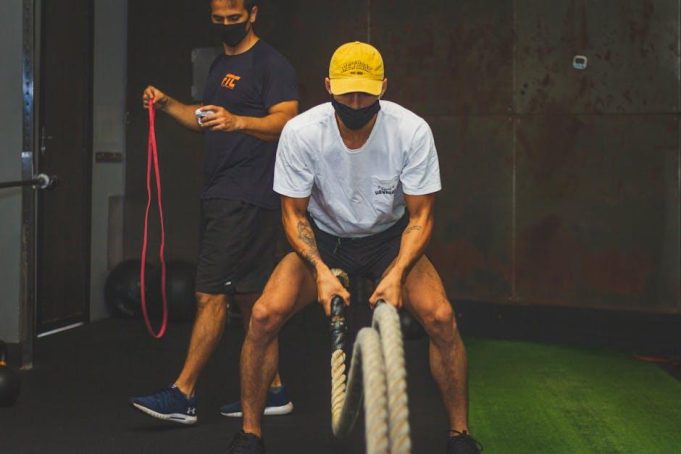In recent years, CrossFit has emerged as a fitness phenomenon, drawing in millions with its promise of high-intensity workouts that sculpt the body and test the limits of human endurance. Its combination of weightlifting, cardio, and functional movements has cultivated a dedicated community of enthusiasts who thrive on its challenges. However, as with any intense physical activity, questions about its safety have begun to surface. Is CrossFit a revolutionary path to peak physical condition, or is it a regimen fraught with the risk of injury? In this article, we delve into the world of CrossFit, exploring the fine line between pushing limits and pushing too far, and examining whether the benefits outweigh the potential pitfalls. Join us as we navigate through expert opinions, personal anecdotes, and scientific studies to uncover the truth about the safety of CrossFit.
Understanding the Risks and Rewards of CrossFit
Engaging in CrossFit can be both exhilarating and daunting, offering a blend of high-intensity workouts that promise to enhance physical fitness and mental resilience. However, the risk of injury remains a significant concern for many enthusiasts. Understanding these risks is crucial for making informed decisions about your fitness journey. Some common injuries associated with CrossFit include:
- Muscle strains and sprains
- Joint pain, especially in the shoulders and knees
- Lower back discomfort
Despite these risks, CrossFit also provides substantial rewards. The benefits include improved cardiovascular health, increased strength, and a strong sense of community among participants. To maximize these rewards while minimizing risks, it’s essential to focus on proper technique, appropriate scaling of workouts, and adequate rest and recovery. By doing so, CrossFit can be a safe and rewarding experience for individuals at various fitness levels.

Analyzing Common CrossFit Injuries and Their Causes
CrossFit has surged in popularity, captivating fitness enthusiasts with its promise of high-intensity, varied workouts. However, with its rise, certain injuries have become more common among its practitioners. Shoulder injuries are often at the forefront, largely due to the overhead lifting and dynamic movements like kipping pull-ups and snatches. These exercises, when performed with improper form or excessive weights, can lead to strains or even tears in the rotator cuff.
Another prevalent issue is lower back pain, frequently arising from deadlifts and squats. The root cause often lies in poor technique or insufficient core stability, leading to undue stress on the lumbar spine. Knee injuries also make the list, particularly among those who push their limits with high-rep squats or box jumps without adequate warm-up or attention to alignment. To mitigate these risks, it’s crucial for CrossFitters to prioritize proper form, listen to their bodies, and incorporate adequate rest and recovery into their routines.
- Focus on technique over the amount of weight lifted.
- Ensure a proper warm-up to prepare muscles and joints.
- Incorporate mobility exercises to enhance flexibility and prevent strain.
- Listen to your body and know when to rest to prevent overtraining.

Expert Opinions on CrossFit Safety Measures
Leading experts in the fitness industry have weighed in on the ongoing debate surrounding CrossFit’s safety measures. Dr. Emily Carter, a renowned sports medicine physician, emphasizes the importance of proper form and technique. “The key to preventing injuries lies in comprehensive training and education,” she notes, suggesting that both trainers and participants should be well-versed in movement mechanics. Dr. John Bennett, a seasoned physical therapist, echoes this sentiment, highlighting the significance of progressive scaling in workouts to match individual fitness levels.
- Emphasis on Technique: Ensuring participants understand the correct form is crucial.
- Progressive Scaling: Workouts should be tailored to suit individual capabilities.
- Continuous Education: Both trainers and athletes should engage in ongoing learning.
- Environment Safety: Gyms must maintain equipment and create a safe workout space.
On the other hand, Coach Sarah Thompson, a certified CrossFit trainer, underscores the proactive measures that the community has implemented. “We’ve introduced regular workshops and safety audits,” she explains, pointing to the ongoing efforts to enhance safety protocols. Moreover, the introduction of wearable technology to monitor participants’ exertion levels is gaining traction, further reducing the risk of overexertion-related injuries.
Practical Tips for Injury Prevention in CrossFit Workouts
To minimize the risk of injuries during CrossFit workouts, it’s essential to focus on proper form and technique. Always prioritize learning and maintaining the correct form over lifting heavier weights. This can significantly reduce the risk of strains and sprains. If you’re unsure about your form, don’t hesitate to ask a coach for guidance. Investing time in mastering the basics can pay off in the long run by keeping you safe and enhancing your performance.
Additionally, consider these practical tips for a safer CrossFit experience:
- Warm up effectively: Ensure your body is prepared for the workout by engaging in dynamic stretches and movements that target the muscles you’ll be using.
- Listen to your body: Pay attention to any discomfort or pain and modify exercises as needed. Pushing through pain can lead to more serious injuries.
- Gradually increase intensity: Avoid the temptation to push your limits too quickly. Gradually increase the weight and intensity to allow your body to adapt safely.
- Incorporate rest days: Allow your body adequate time to recover and repair by scheduling regular rest days into your routine.
- Stay hydrated and fueled: Proper nutrition and hydration are crucial for muscle recovery and overall performance.
By implementing these strategies, you can enjoy the many benefits of CrossFit while minimizing the potential for injury.































